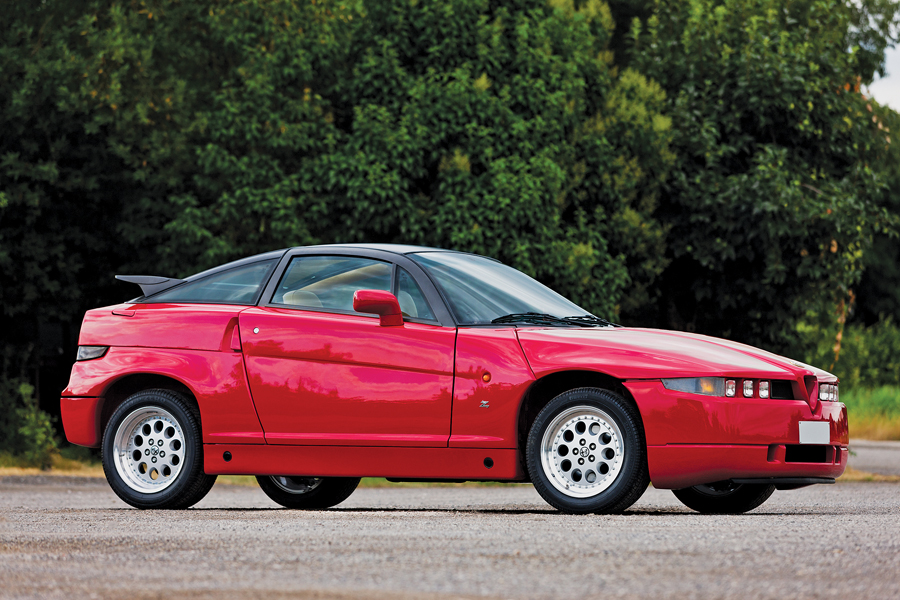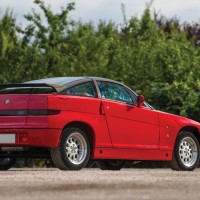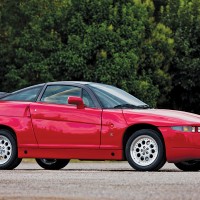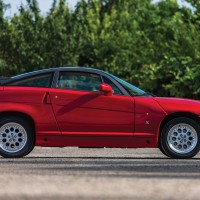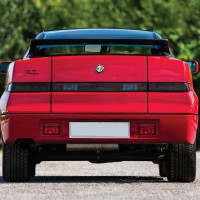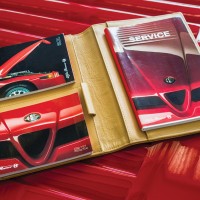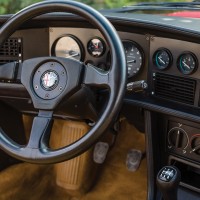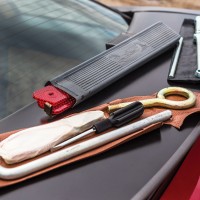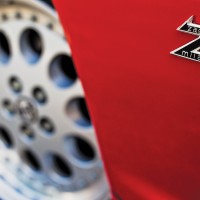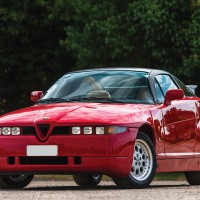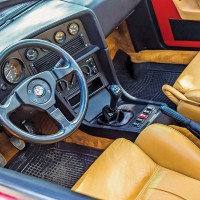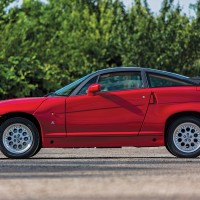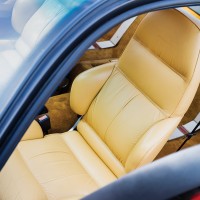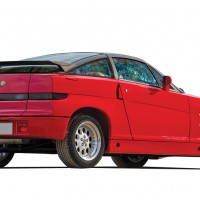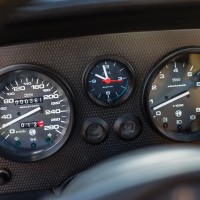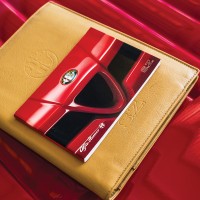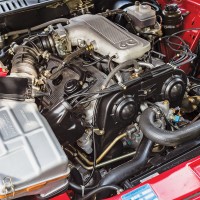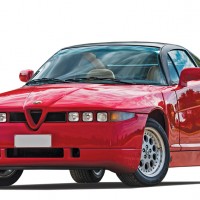SCM Analysis
Detailing
| Years Produced: | 1989–91 |
| Number Produced: | 1,036 |
| Original List Price: | $67,500 (approximate) |
| SCM Valuation: | $45,000–$95,000 |
| Tune Up Cost: | $675 |
| Distributor Caps: | $20 |
| Chassis Number Location: | ID tag on firewall, stamped on floor of trunk |
| Engine Number Location: | Right side of engine block |
| Club Info: | Alfa Romeo Owners Club |
| Website: | http://www.aroc-usa.org |
| Alternatives: | 1990 Nissan Skyline GT-R, 1992 Ferrari 348 Serie Speciale, 1992 Porsche 911 Carrera RS |
| Investment Grade: | C |
This car, Lot 138, sold for $108,245 (£67,200; £1.00=$1.61), including buyer’s premium, at the RM Sotheby’s London, U.K., sale on September 7, 2015.
Analyzing and commenting on the price achieved for this car and relating it to value was an interesting exercise, as it is for me every day in my business as an appraiser. Frequently, “price,” “cost” and “value” are used interchangeably in conversation — although they are quite different. This Alfa is a good illustration of how they vary.
Price is the amount of money paid by a buyer to a seller to acquire a product or service. The amount charged by the seller includes the cost, as well as any profit and applicable taxes. Cost is the amount of money spent on the creation of a product — the steel, rubber, glass, plastic and paint — that go into building a car.
Value is the usefulness of a product to a customer. For example, if you need to have an interesting collector vehicle that you could drive every day of the week in all types of weather, a nitromethane-powered vintage dragster race car might not have much value to your segment of the market. This usefulness is sometimes expressed in monetary terms, is always defined by the market and can vary greatly from user to user.
An investment-grade car
The Alfa Romeo SZ fulfills just about all the requirements of an investment-grade automobile. What are those requirements? They include rarity, importance in design and/or engineering, historic relevance to the brand, driving appeal and marque image. Rarity is ensured, with just over 1,000 coupes and 200 spiders built. The design is very much of the period and is a dramatic and memorable exemplar of the “block wedge” look.
On the engineering and historic-relevance front, the SZ didn’t break any new ground, but it was certainly the highest expression of the front-engine/rear-wheel-drive Alfa layout that began with the Alfetta in 1972. The chassis development done by Giorgio Pianta is in line with the successful competition programs he managed for other brands in the Fiat Group portfolio.
For driving appeal, the SZ delivers, although not in the “power conquers all” manner of many performance cars. It’s the balance that convinces, with truly fantastic grip and an almost complete absence of roll combined with communicative, responsive steering. You have enough power to get where you need to go with enough enjoyment, but of course, that bar has moved dramatically upwards since 1989.
Finally, it was a real halo car for Alfa at the time — a reminder of the great special-bodied coupes that made Alfa’s reputation from the 1930s through the 1940s, 1950s and 1960s.
An object of desire
In the interest of disclosure, I have to say that an SZ has been on my list of Must Owns since I first saw it at its March 1989 launch at the Geneva Auto Show. Its admittedly polarizing looks appealed to me at once — a car with this kind of presence rarely comes along. Is it beautiful? Certainly not — but you won’t forget what one looks like. And despite the fact that Zagato actually lost the competition to style the car, they did build it, and there’s no doubt that the Centro Stile team that drew the car on their computers must have had more than one slightly bizarre Zagato design in their hearts and minds. I like to think Zagato itself didn’t go “Zagato enough” in their proposal.
One car, three markets
These cars were very expensive when new, approximately $65,000 in 1990. Depreciation was not too bad, all things considered, with the lowest prices hitting about $30,000 a decade later. One could be bought in the mid-$30k to mid-$40k range for many years thereafter.
Prices have recently taken a notable turn upwards — but not across the board. There are actually three very different market levels for this car.
The first market consists of cars that were purchased and driven — long and hard. They have anywhere from 100,000 to 300,000 km (62,000 to 186,000 miles) on the clock and are on the market for €30,000–€40,000 ($33k–$44k at the exchange rate of the time of writing).
Then there are the virtually unused time capsules, such as our subject car. They all have less than 1,000 km (621 miles) on the road and various service histories. They are perfect for looking at, but they are less wonderful to use, as each mile traveled lessens their appeal for their particular audience.
The middle ground belongs to the truly rare examples: cars that have been driven and maintained as special, compelling automobiles. They show from 20,000 to 50,000 km (12,427 to 31,068 miles) and can be had from €60,000 to €75,000 ($66k–$83k). They will all have good service histories, original books and paperwork. This will include its Certificato di Collaudo, which is the final inspection certificate with the number of the car hand-written on it and bearing the signatures of the inspector, technical supervisor and the director of production quality, attesting that this particular car passed all functional inspections as well as a test on the road and on Alfa’s private test track at Arese.
Usable cars for less
In October 2015, my good friend Martin Willems in the Netherlands found me a great 1991 SZ with 58,000 km (36,039 miles), two owners from new, all paperwork and fully serviced. It was in very good condition, with just a bit of road rash on the front bumper and a scratch on the trunk hatch.
The asking price was €58,000 (about $66k). I considered it long and hard — and finally said no. It was exactly the kind of car I was looking for, but in the end, the incompatibility of my needs and the SZ was too much to overcome.
I like to drive my cars — and the NLA headlights, bespoke Koni electronically adjustable shocks, the €2,000 ($2,288) cost of a replacement windshield and the short life of the special Pirelli P-Zero tires were too many concerns. There was also the California Department of Motor Vehicles to contend with, as no one would tell me if I could actually register the car once I got it home.
That a 349-km SZ might sell for this price is not a shock, but it’s also no indication that a far more usable and ultimately more satisfying to own example cannot be found for 25% less than paid here. It’s a graphic expression of Price and Value. This is a clear case of a higher price that doesn’t represent higher value. ♦
(Introductory description courtesy of RM Sotheby’s.)
